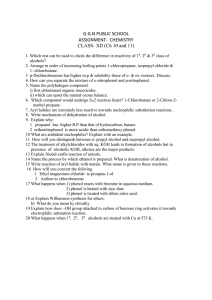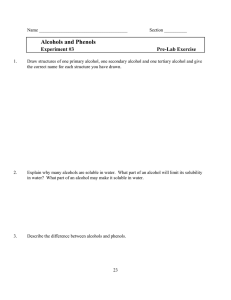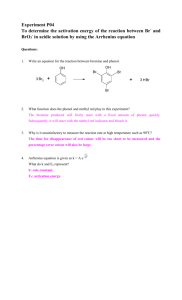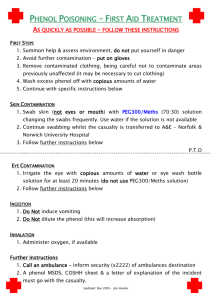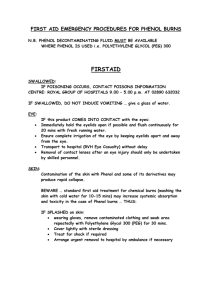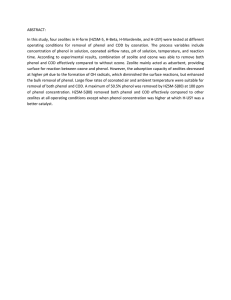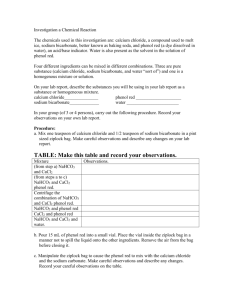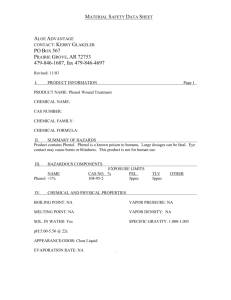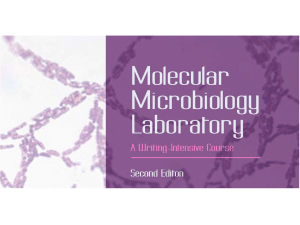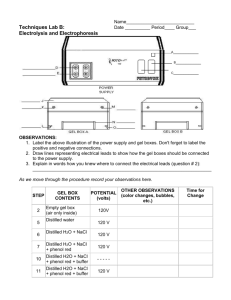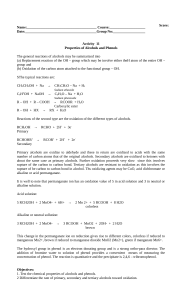CH 3502 - Loyola College
advertisement
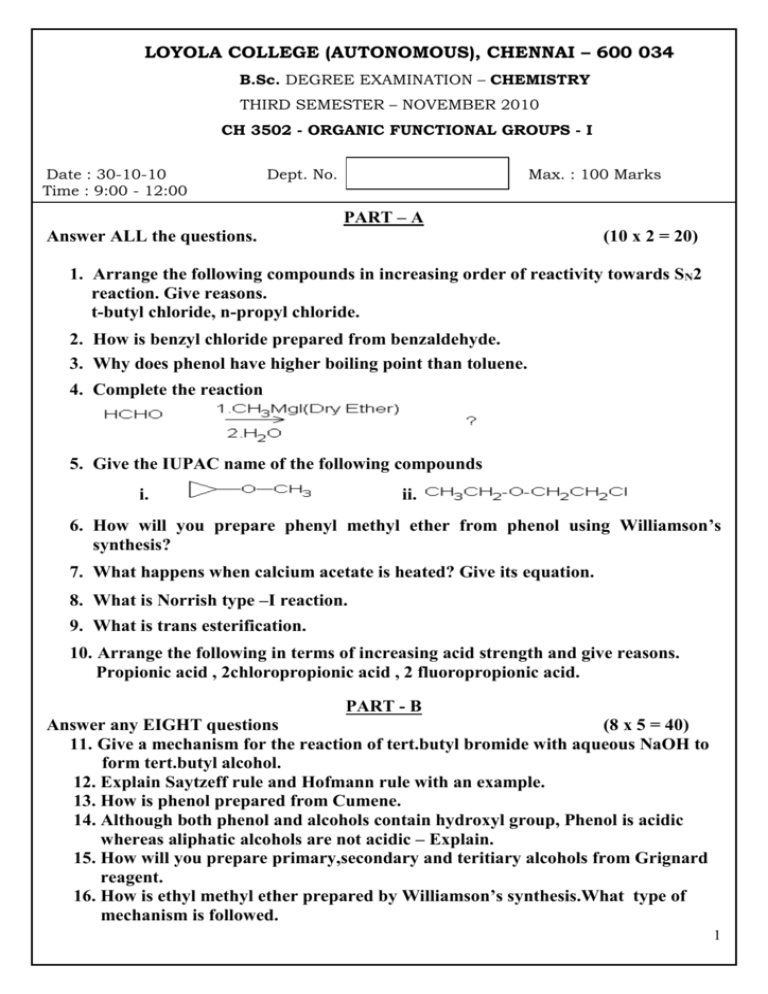
LOYOLA COLLEGE (AUTONOMOUS), CHENNAI – 600 034 B.Sc. DEGREE EXAMINATION – CHEMISTRY THIRD SEMESTER – NOVEMBER 2010 CH 3502 - ORGANIC FUNCTIONAL GROUPS - I Date : 30-10-10 Time : 9:00 - 12:00 Dept. No. Max. : 100 Marks PART – A Answer ALL the questions. (10 x 2 = 20) 1. Arrange the following compounds in increasing order of reactivity towards SN2 reaction. Give reasons. t-butyl chloride, n-propyl chloride. 2. How is benzyl chloride prepared from benzaldehyde. 3. Why does phenol have higher boiling point than toluene. 4. Complete the reaction 5. Give the IUPAC name of the following compounds i. ii. 6. How will you prepare phenyl methyl ether from phenol using Williamson’s synthesis? 7. What happens when calcium acetate is heated? Give its equation. 8. What is Norrish type –I reaction. 9. What is trans esterification. 10. Arrange the following in terms of increasing acid strength and give reasons. Propionic acid , 2chloropropionic acid , 2 fluoropropionic acid. PART - B Answer any EIGHT questions (8 x 5 = 40) 11. Give a mechanism for the reaction of tert.butyl bromide with aqueous NaOH to form tert.butyl alcohol. 12. Explain Saytzeff rule and Hofmann rule with an example. 13. How is phenol prepared from Cumene. 14. Although both phenol and alcohols contain hydroxyl group, Phenol is acidic whereas aliphatic alcohols are not acidic – Explain. 15. How will you prepare primary,secondary and teritiary alcohols from Grignard reagent. 16. How is ethyl methyl ether prepared by Williamson’s synthesis.What type of mechanism is followed. 1 17. Write a short note on cleavage of ethers by acids. 18. Discuss the mechanism of Cannizaro reaction. 19. Explain crossed aldol condensation with an example. 20. What is Wittig reaction ? Explain its mechanism. 21. Discuss the geometric isomerism of unsaturated dicarboxylic acids. 22. Explain the mechanism of alkaline hydrolysis of esters. PART – C Answer any FOUR questions. (4 x 10 =40) 23. a) Explain the fact that allyl chloride undergoes substitution reaction by SN1 mechanism whereas n-propyl chloride reacts by SN2 mechanism. b) Discuss the Mechanism of E1 and E2 reactions of alkyl halides. 24. a) Give the mechanism of Reimer Tiemann reaction and Kolbe’s reaction. b) How is phenolphthalein prepared from phenol? 25. i. How is acetic acid converted to ethyl acetoacetate. ii. How would you prepare the following compounds from acrylic acid. a. Propionic acid. b. Glyceric acid. c. 2- bromo propionic acid. 26. a) How is ethylene oxide prepared? b) How does diethyl ether react with i.O2/long contact ii.PCl5 c) How does ethylene oxide react with the following reagents: i. H2O/H+ ii. HBr iii.CH3CH2OH iv.NH3. 27. i. How will you prepare the following compounds a) 2-propanol from CH3CHO b) Lactic acid from CH3COCH3 ii. Discuss the mechanism of Reformatsky reaction. 28. a) Write notes on Clemmensen reduction and Wolff-Kishner reduction. b) How will you synthesize cinnamic acid using Perkin’s and Knoevenagel reactions. $$$$$$$ 2
